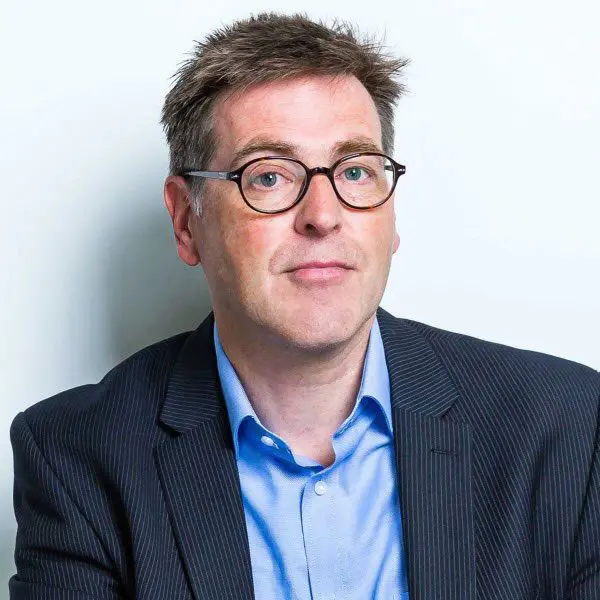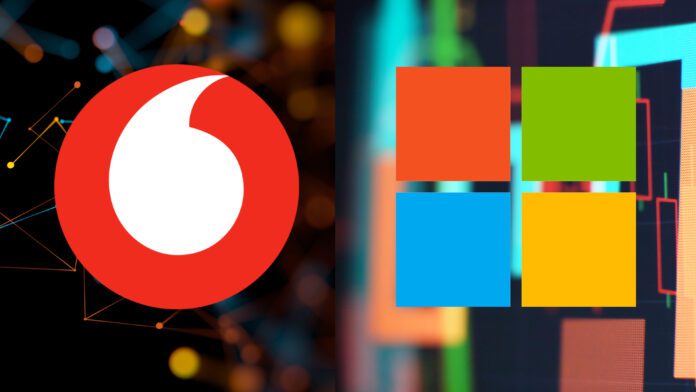When news broke in January of Vodafone’s double deal with Microsoft to dichotomize and nebulise its airtime service operations, so its ancillary IoT unit is spun-off as a joint venture and its mainstream 5G business is reprogrammed in the cloud, there was lots of talk, of course. It was presented as “game-changing” (like so much), and far-reaching (“B2B, IoT, AI, cloud”, plus ‘customer experience’, financial services, and all the networking in-between). But there were loads of questions, too; mostly just because it looks like a complete and complex re-set for the UK firm.
The Vodafone-side investment figure ($1.5 billion), associated with the big 10-year cloud modernisation project, was tossed about easily in headlines, and linked invariably to Microsoft-powered AI tools; and it looked on the face of it like Vodafone, the best-regarded operator in IoT, had agreed a side-deal with a hyper-active cloud hyper-scaler that had just bailed on IoT completely. Details about Microsoft’s opposite-way equity stake in the IoT venture, which went live April 1, were scant, and buried anyway. There were questions everywhere, and none were properly answered (or asked, actually).
Full disclosure: this article does not answer all of them. But just as the new IoT business goes live (“April,” they said in January, and “April 1” they confirmed today; and ahead of more candid briefings by both firms, presumably), it explains the business logic for Vodafone, at least – as presented by Phil Skipper, the company’s long-time head of IoT strategy, speaking during the post-MWC come-down last month. (Subsequent RCR report-writing has held up its release.) “The market has changed,” he says. “There are fewer big bets, but the big bets are clearer. And Vodafone IoT is clearly a big bet.”
This cannot be disputed. Like a few others, Vodafone has been at it with IoT since before IoT was called IoT, when the discipline was more prosaically defined as machine-to-machine (M2M) communications; it has a base of 185 million connections in 190 markets, it claims, connected on every flavour of cellular (from M2M-era 2G, through specialist low-power NB-IoT, and full-fat LTE/5G), and works via Vodafone Business as an ad hoc integrator of non-cellular tech, as well. Plus, it can respond to the old money argument that its IoT business is profitable and growing, at least.
Indeed, it was worth about £1 billion, said the city, when Vodafone started to shop it around the market in the middle of last year, when talk about a spinoff first emerged – about the same time as it hived off its blockchain-based Digital Asset Broker (DAB) IoT trading platform in a so-called Economy of Things joining venture with Japanese trading and electric services company Sumitomo Corporation. The template was set, effectively, and the plan with Microsoft is to “hyper-scale” its managed IoT platform to “300 million” private enterprises, government agencies, and consumers.

Skipper says: “We want a separate IoT business which – although still majority-owned by Vodafone, which is likely how it ends up – has got more freedom to hyper-scale. And a good example of that is the investment proposed by Microsoft. Now, that would be impossible if we were an operating department within Vodafone. So by carving out the business, it gives us far more latitude to scale. It also enables us to have conversations which telcos may not want to have with other telcos, but would probably have with a more independent IoT business.”
He goes on: “We are saying: that is an IoT business in its own right, which needs to create its own ecosystem of partners and channels and so on – which are dedicated to IoT. And we have a super head start because we’ve got access to Vodafone’s networks, of course, access to Vodafone’s sales channels – and the combination of those has taken us from nothing to 185 million connections over 10 years. So that works. The question is what else can you do to make it bigger, and to hyper-scale faster? But that’s where we’re heading.”
Some quick questions about the makeup of the deal, and the role of Microsoft in IoT – before breaking into more chat about the state of things. Skipper bats away a question about the size of the equity stake, and switches focus to the size of the interest. “Yeah, I can’t give a number. But what is interesting is the level of interest; that’s the critical bit… [Because there is this] big cloud deal, about how to modernise our data centre infrastructure and so on. As part of those discussions, [Microsoft] went, well, if you are going to carve out your IoT business, we might be interested.”
He goes on: “To get interest that early in the process is significant. So it’s not about size; it’s all about the intent. Microsoft recognizes the potential of Vodafone’s IoT business and Vodafone recognizes the potential to transform its IoT business with the sorts of services and capabilities Microsoft brings. It gives us access to technologies to enhance our service proposition; and AI is clearly one of the key areas.” But hang on; Microsoft quit IoT – almost like it held up its hands and said, ‘IoT is just too difficult’. The same with Google; the same with IBM, and others.
The question is asked, more as a statement: it almost reads like Microsoft is backtracking on a mistake. Skipper is composed; he explains it away as a merger of skill-sets. “Yeah, look, IoT is like a business of two halves. There’s the device and the connection and then the application and the analytics, and whatever else on top. And traditionally, those things were separate; you normally do one, and then the other. But IoT doesn’t work without both; they are symbiotic. It’s this realisation that every IoT connection generates traffic for AI and all the rest of it.”
This is where the quote about “big bets” comes in; Skipper explains how the IoT market has matured, and certain players have doubled-down on total IoT connectivity, gambling on economies-of-scale, and certain others have switched tables to roll the dice either on niche IoT airtime pursuits or parallel IoT tech disciplines. He says: “Ten years ago, IoT was all about driving traffic on a mobile network. It was basically AT&T, Telefonica, and us – you know, the big MNOs. And these systems became like adjuncts of our existing networks.
“We’d sell Vodafone’s network through Vodafone IoT to Vodafone’s channels – of which we had 20 separate op-cos. But IoT is different now. It is an industry in its own right. There are more operators and more networks. But it’s also a tougher market; if you haven’t made it in IoT already, then you are probably not going to make it. So there has been a shakeout where certain bigger IoT companies just see the goal to get bigger, and a bunch of others are specialising, to focus on automotive or healthcare, or whatever, and a few others have reassessed what they are doing in IoT.”
The point about “big bets” is that Vodafone is the biggest (outside of China) in the first group of “bigger IoT companies” (looking to “get bigger”), and that its strategy for new hyper-scale IoT growth in the post-shakeout IoT era is to combine with Microsoft on these complementary “halves” – these twin disciplines of airtime / application, hardware / software, edge / cloud; of IoT sensing and AI sense-making, to force the logic. “The business of IoT is in two parts, and ours is the first part – which is managed IoT connectivity,” he explains.
“We’re not moving up the value chain to do these other things. We’re delivering the bread-and-butter – to create the most faultless network service anywhere. Which is what IoT providers need to sell their telematics solutions to anyone on the planet – in an ecosystem that is proven to work. Companies now trust IoT at a much bigger scale; not because of what you say but because of how you execute. That ability to execute is the key differentiator. And this combination of parts, and this consolidation of like-minded and like-sized organisations, is a very strong proposition.”
There is more, but we will pause there for the moment. (This article is continued here.)

